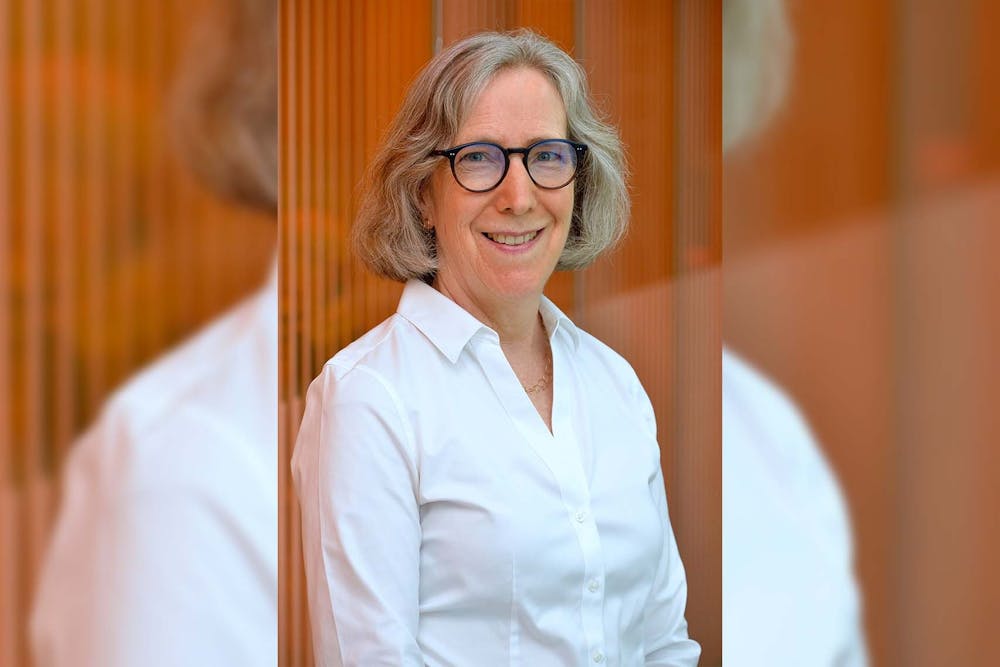
A Penn Engineering professor has received $2.2 million from the Department of Energy to fund research in synthesizing cleaner and more efficient fuel cell technologies.
Karen Winey — the Harold Pender Professor of Chemical and Biomolecular Engineering and Materials Science and Engineering — is currently working on a project that designed a new fluorine-free polymer in order to address toxicity of fluorine-based polymers used to convert hydrogen into electric power, according to a Penn Engineering blog post.
With the grant from the DOE, which will be distributed over three years, Winey's team will be able to reveal an even “finer-grained picture of these polymers’ internal structure, elucidating the fundamental role of water in determining their ion transport properties."
“Detailed understanding of how protons and hydroxide ions move in hydrated polymers is only possible through this kind of highly coordinated effort,” Winey told Penn Engineering Today.
With the rising demand for electrical energy, fuel cells have become increasingly important, according to the blog post. The power of fuel cells lies in their ability to convert a large amount of hydrogen into abundant electrical power — enough to serve as an emergency reserve for homes or powering a vehicle — without producing carbon emissions. A fuel cell’s electrolyte component determines how quickly the cell’s fuel is converted into energy, and also insulates the electrodes from one another.
Currently, Nafion is the leading solid polymer electrolyte found in fuel cells, according to an August 2021 Penn Engineering blog post. However, Nafion’s fluorine-based chemistry is costly due to its expensive price and toxicity to the environment.
As governments across the world consider proposed bans on fluorine-based polymers, Winey began addressing this challenge by using fluorine-free polymers with "precisely placed sulfonate groups." When coming into contact with water, the sulfonate groups are able to assemble into fully connected paths that form intricate water channels for protons to flow through. These channels can be further expanded just by exposing the polymer to humidity, according to Penn Engineering.
The DOE grant will fund a collaboration between the Winey Lab at Penn, Sandia National Laboratories, Pennsylvania State University, and Florida State University.
This grant follows a collaborative August 2021 project which included members of the Winey Lab, the Center for Integrated Nanotechnologies at Sandia National Laboratories, and Florida State University. The team showed then that the proton conductivity of a new fluorine-free polymer increased with water content and exceeded that of Nafion.
Although a promising discovery, further investigation is still needed to ensure the viability of this new polymer, according to Penn Engineering.
This collaborative DOE grant is the second that Winey has received in recent years. In August 2022, Winey received a $3.25 million grant with collaborators at Penn and the University of Massachusetts, Amherst to focusing on developing polymer-to-polymer conversion to reduce polymer waste, Penn Engineering reported.
Winey was also awarded the 2023 Award in Polymer Chemistry from the American Chemical Society “for outstanding contributions to the understanding and advancement of polymer nanocomposites and ion-containing polymers, particularly structural control and transport dynamics," announced on Sept. 9.
ACS is one of the world’s largest scientific organizations, with over 151,000 members in 140 countries, and a mission “to advance the broader chemistry enterprise and its practitioners for the benefit of Earth and its people.”
The Daily Pennsylvanian is an independent, student-run newspaper. Please consider making a donation to support the coverage that shapes the University. Your generosity ensures a future of strong journalism at Penn.
Donate







